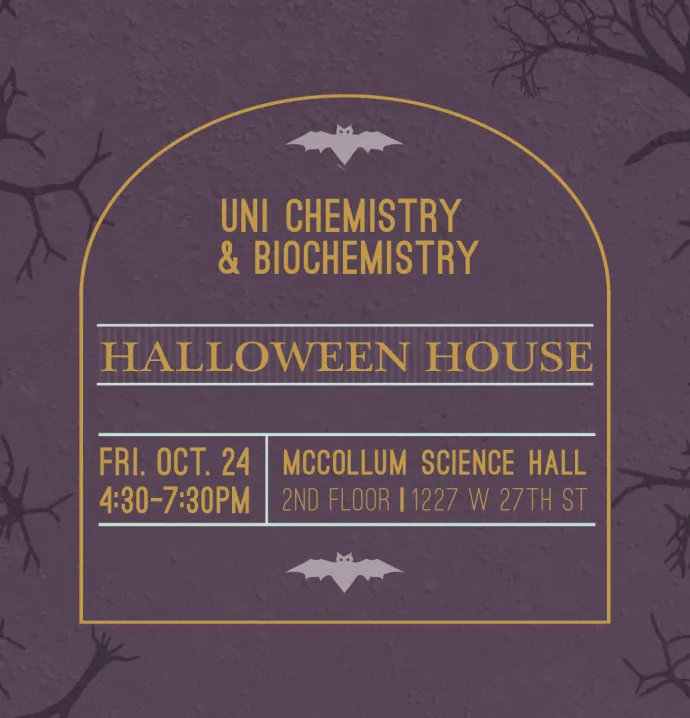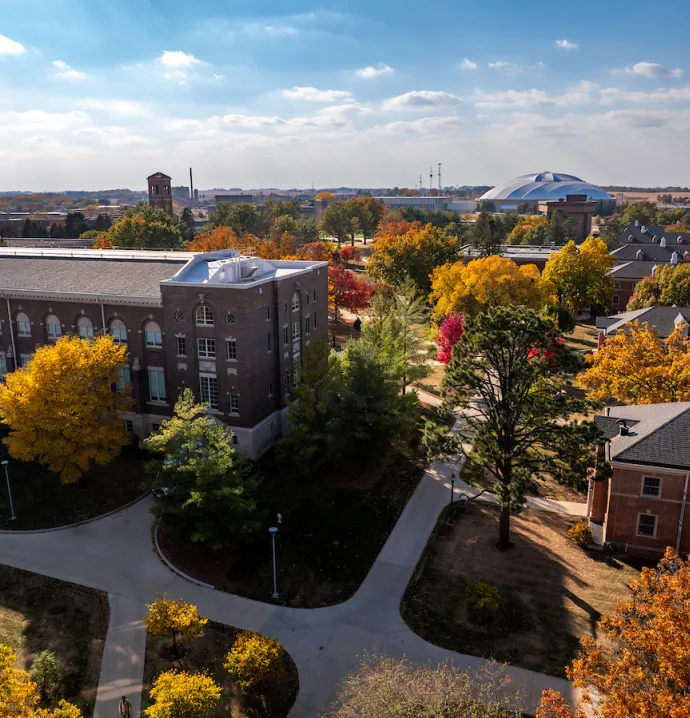UNI undergrad discovers long-sought gene
UNI undergrad discovers long-sought gene
University of Northern Iowa junior Ashley Campbell had just made the biggest scientific discovery of her life, but it took a moment for the truth to sink in.
Campbell is part of a group of UNI undergraduates researching the genetic makeup of the chewing louse, a grain-sized parasite similar to lice in humans that makes its home on furry animals. The research, which aims to expand our knowledge of evolutionary biology for use in medical applications, is exacting and sometimes tedious.
But one day in December, she was working in the biology lab when she saw something unique in the reams of data - what looked like a match amid hundreds of cloned mitochondrial DNA to a gene known as nad2. She showed her find to her research advisor, biology professor James Demastes, who confirmed Campbell had discovered a new gene for this species.
“He stopped and said ‘Ashley, you just discovered a gene that nobody had discovered before,’” Campbell said. “I had to just sit there a moment. I didn’t realize that I had just done something that had never been done before.”
“It kind of had to be told to me, because I was ready to get working and find more. But it slowly started to sink in that I had discovered a gene and I didn't know I was capable of doing that.”
Demastes, who has been studying the chewing louse since 1987, remembered the moment well.
“Like many students at UNI, Ashley has a good Iowa work ethic. She had a project, and she was going to finish it,” Demastes said. “I had to keep reminding her that nobody, anywhere or at anytime, had studied the mitochondrial genome of this species and that her findings were absolutely unique. She really liked being the first human to ever see those sequences and certainly the first person to know where that gene was hiding.”
Demastes and other students at UNI have been studying the chewing louse for years because of their unique segmented mitochondrial DNA, which also gives researchers a chance to study the roles of each individual gene. Those genes can be helpful in discovering treatments for diseases and disorders that stem from the mitochondria in humans.
“If you know that nad2 is responsible for job X, and job X isn’t working in a human, now you have a more direct focus on where to go next,” Campbell said.
UNI offers undergraduate students a unique opportunity to do scientific research and Campbell wasn’t the first to discover a new gene.
Campbell is set to graduate in December and is currently working on her application to medical school and studying for the MCATs. She’s pursuing an interest she’s had since she was a 4-year-old walking around with a plastic stethoscope.
“I’ve always had a knack for science,” Campbell said. “I love that it’s always changing. I don’t think you can ever master science, you have to grow with it. That’s an appeal to me. You can never get bored with it.”
So, what are mitochondria? They’re typically described as the “powerhouse of the cells.” They provide energy to the cells, and they are the remnants of ancient bacteria that the cell has since incorporated into its own structure and function.
Because of this, mitochondria has its own DNA. In most animals, including humans, the DNA of mitochondria is arranged in one circle featuring 13 main protein coding genes.
But the chewing louse is different. Instead of one big circle, its mitochondrial DNA is broken into fragmented “mini-circles.” Because of this, sequencing the genes of the species has long been a problem for both UNI researchers and those at other universities. Now, Campbell’s discovery is helping complete the picture.
“We’re almost positive now that our organism has 13 mini circles instead of the one big one,” Demastes said. “We’ve been working with them for a long time, and we’re just now figuring out that their mitochondria are arranged like this.”
While it may seem like an inconsequential organism, the unique mitochondrial configuration of the chewing louse, and its relationship with the host it latches onto, can provide valuable information.
“As strange as it seems to be working on this chewing louse, they are a model organism for evolutionary biology studies, especially co-evolution,” Demastes said. “They’re a unique case where they’re co-evolving with their hosts.”
And while the organism has yielded some of Campbell’s most exciting scientific moments, she admitted that, at first, the idea of working on a tiny parasite wasn’t the most appealing.
“I try to tell my friends about it and they’re like, ‘lice? Ew,’” Campbell said. “I was kind of intimidated by the louse thing. I never thought I would be studying genes in a parasite. It’s not something that comes to mind when people think of research. It’s been a really great fit for me and I’ve enjoyed all of the work I’ve done in the lab.”
Campbell also hopes the experience will give her a competitive edge in her medical school applications.
“Doing research really helped me to strengthen my problem solving skills, communication skills, scientific writing skills, analytical skills, and to troubleshoot when things do not go as planned,” Campbell said. “My advisors have been exceptional in teaching me and I am so thankful for all they have taught me, and all the hours they have spent helping me develop these skills.”
And while she still hasn’t decided what field of medicine she wants to enter, Demastes said that her work in the biology lab will provide her with a solid foundation.
“Students learn a lot about the underlying science and what it takes to be a critical thinker,” Demastes said. “She’s gotten very good at reading scientific literature and analyzing data. She’s learned to problem solve and troubleshoot. I think that’s a lot of what doctors do. She’s a super sharp student. She’s made my job pretty easy when it comes to mentoring her.”




